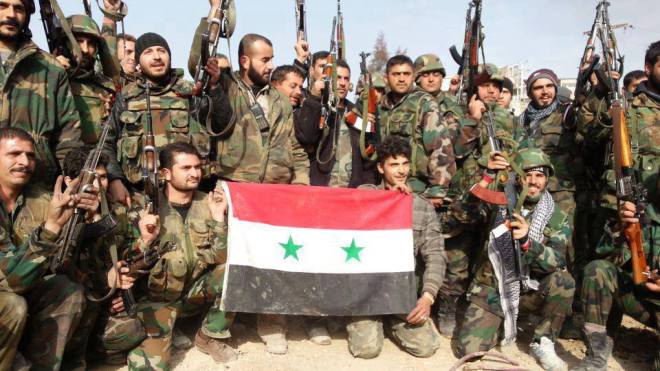(addendum and corrections @ 21:24 Damascus time: in bold)
Note of the author: This article consists of a brief rundown of the latest Russia-US agreement’s major points. The referenced articles discuss the agreement facts but also the analysis each author has about it. I do not deal with their personal analyses here. Instead, I provide a 1) translation of the principal settlement points, and 2) my own insight about the whole situation.
Russian Foreign Minister Sergey Lavrov and his US counterpart John Kerry met yesterday, 9th of September 2016, in Geneva. The meeting reportedly lasted a “record” 12 hours. Pizzas and vodka were even distributed to the waiting journalists.
While the English-speaking media is busy reporting on the pizzas and vodka, it covered very little of the actual agreement contents . The Arabic press, however, contains several extensive reports on the new agreement points, why this agreement is different than the previous ones and what are its possible implications for the future of Syria.
The plan consists of two truces of 48 hours each, within a 7-day period, starting September 12th. If the truces are successful, it will extended to 72 hours (instead of 24). And, if those are also successful, a permanent ceasefire will be implemented. Until now, it is unclear whether or not this proposed ceasefire will be a repeat of the one from past February.
Kerry reiterated that Russian-American joint operations are putting up a map to identify the locations of the terrorist groups. Lavrov said that this joint operation will identify the procedures to respond to the factions that would not respect the stopping of hostilities.
The Americans received the guarantees from the Russians about Syria’s commitment to the agreement of Geneva. It seems also that any political solution/agreement will have to wait until completion of the situation on the ground (aka the 7-day agreement).
In addition, Kerry said that “we have communicated with opposition factions which confirmed its readiness to implement the agreements we drafted”.
This new Russian-American agreement is regarded as a first “because it has a very strict and clear time-line”. However, its main weakness remains “the absence of monitoring and control measures to ensure its application”. In contrast, this agreement is different from the previous one (February 2016) “because it is explicitly linked to the future stages” of any solution to stop the war in Syria, and it is clearly stated that the truce will turn into a complete ceasefire (see above).
Reaching this agreement came as a surprise, as it was not expected. On September 3rd, it was that Russia and the USA were “very close to a deal” concerning Syria. On September 5th, it was stated that the two sides could not, in fact, reach an agreement. Indeed, the Russian side had “refused a big part of the agreement, when it was presented to them by the Americans in previous negotiations, as evidenced by Michael Ratney’s letter”.
Michael Ratney, the U.S. Special Envoy for Syria, drafted and presented to Russia a plan, which states that “the Syrian Arab Army (SAA) must withdraw 500m to the North of Castello road”. In other instances, the distances of withdrawal range from 1000 to 3500m, to the South of that same road. In addition, Ratney’s plan “dictates which weapons the SAA can keep”, and “which weapons will be placed in the proposed monitoring points”.
Evidently, the ground situation is currently very different than the one back in last February. Indeed, the advances of the SAA and its allies in Aleppo were a turning-point in the course of the war. However, one still wonders how this agreement will turn out, especially because of some of its very particular aspects. Indeed, it is important to keep in mind that this truce will most probably NOT turn into a ceasefire, as it is almost guaranteed that the terrorists will not respect the initial truce. The terrorists have a very long record in breaking the previous truces. Furthermore, and in previous cases, the USA, Turkey and Saudi Arabia exploited truce agreements to re-arm the terrorists. This time will definitely be no different on this front.
Some Arabic articles are saying that Americans have lied to the Russians many times, changing the clauses of various deals and agreements. Even with this being factually true, Lavrov and other Russian politicians seem to be making the same mistake over and over again. After the first time, it actually stops being a mistake, and becomes a deliberate, calculated geopolitical decision. Other articles mention that Syria has become a playground where Russian and American interests collide. By this logic, Syria and its people are considered as simple pawns, who will suffer no matter the outcome.
A few days ago, it was very clear that the SAA and its on-the-ground allies are continuing their battles as they deem adequate, irrespective of political agreements and decisions made by Russia, the USA, Turkey or others. All the details of the newly-reached agreement are still not available to the public, and its outcome will most likely be similar to the previous ceasefire: more losses for the SAA and its allies. One then wonders: why repeat the same mistake over and over again? Or is it not a mistake, then, but instead a well-calculated decision, the result of which is detrimental to Syria?
Referenced articles:
https://assafir.com/Article/1/509823
